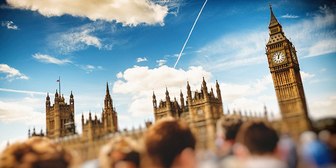John Humphrys asks: Should there be tighter restrictions for young drivers?
A government-sponsored report, published this week, is recommending that there should be tighter restrictions on teenagers’ freedom to drive. The aim is to cut the number of deaths and serious injuries on our roads. Is this targeting of young drivers sensible and justified, or are some of the proposals too restrictive and even unenforceable?
Britain has had a pretty good record over recent decades in reducing the number of deaths on our roads. But at around three thousand a year there are still too many. The grief and pain caused by these deaths and by the many more accidents that leave people seriously injured are reason enough to attempt to get the figures down even further.
Work by the government-backed Transport Research Laboratory has discovered that while young people in the age group 17-24 account for only 5% of the total number of miles driven in Britain every year they are responsible for around 20% of the deaths and serious injuries caused on our roads. The obvious conclusion is that there should be greater restrictions on young people’s freedom to drive.
At the moment it is possible to apply for a provisional driving licence three months before the age of seventeen and then to apply for the full licence at that age. What the TRL report is suggesting is that, in effect, teenagers would not be eligible for a full licence for a further two years, when they were nineteen.
Specifically, they propose that young people would have to wait until they were eighteen before getting their hands on the wheel at all. At that age they would become eligible only for a new probationary licence which they would have to hold for a minimum of a year before applying for a full licence. During this period they would have to undergo at least 100 hours of daytime driving under supervision and 20 hours of supervised night-time driving. They would also be banned from driving between ten o’clock at night and five in the morning unless they were accompanied by a passenger over thirty. Even people learning to drive in their twenties would be banned from carrying passengers also under thirty.
Clearly the drafters of these proposals have in their sights the danger caused to everyone by the recklessness of many young drivers, newly liberated by gaining their licence, who pack their cars with their mates and charge round the place in an increasingly alcohol-propelled stampede. The report also floats the idea of lowering the alcohol limit for all drivers.
The researchers reckon that as many as 4,470 deaths or serious injuries could be prevented by these measures. They also point out that these greater restrictions would help lower insurance premiums for young people so making it cheaper for responsible young drivers to take to the roads.
Some motoring organisations have welcomed these proposals. Stephen Glaister, the director of the RAC Foundation, said: “Young people are four times more likely to die in a road accident than as a result of drink or drugs. Yet, as a society we seem to turn a blind eye to this carnage. If this was any other area of public health there would be an outcry. Circumstances conspire against young drivers. Their youth and lack of experience create a deadly mix which means one in five will have an accident within the first six months of passing their test.”
But Edmund King, the president of the AA, while supporting some of the proposals, was sceptical of others. He said: “You should prepare young drivers to be safe when they get their licence rather than give them their licence and then restrict them.” In particular he advocated that those learning to drive should be allowed to practise driving on motorways and be required to gain experience driving in rural areas and in bad weather before they were granted their licence.
Others, however, are dubious about whether some of the proposals, however good in theory, could actually work in practice because of the difficulty of enforcing them. For example, the requirement that during the probationary year young drivers should provide evidence that they have satisfied the requirement for the minimum number of hours of supervised daytime and night-time driving is difficult to enforce without a cumbersome bureaucracy to oversee it, but without such oversight it is easily open to abuse. And the proposal that young drivers should always have a passenger over the age of thirty during ‘curfew’ hours creates quite an enforcement problem for the police: how easy will it be for them to identify thirty-year-olds, and isn’t there a risk that young drivers will be unduly liable to being stopped unnecessarily by the police? Haven’t the police better things to do with their time?
Defenders of these new ideas point out that similar restrictions on teenage driving have greatly improved road accident statistics in Canada and elsewhere and that they should be given a try. The government so far is expressing an open mind but plans to publish a green paper on its conclusions in the next few months. Should these ideas become government policy?









